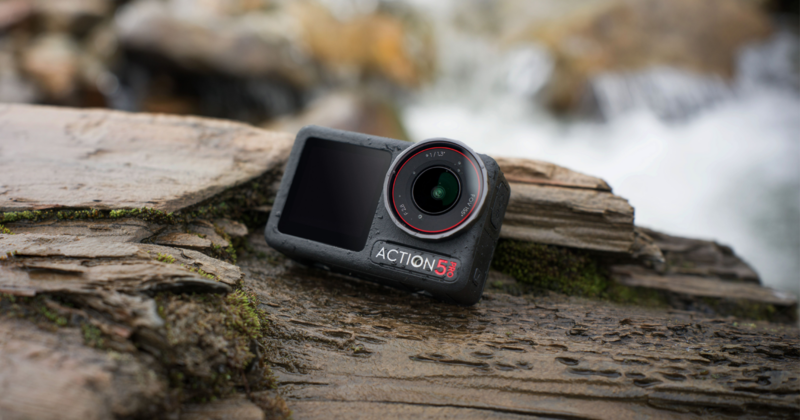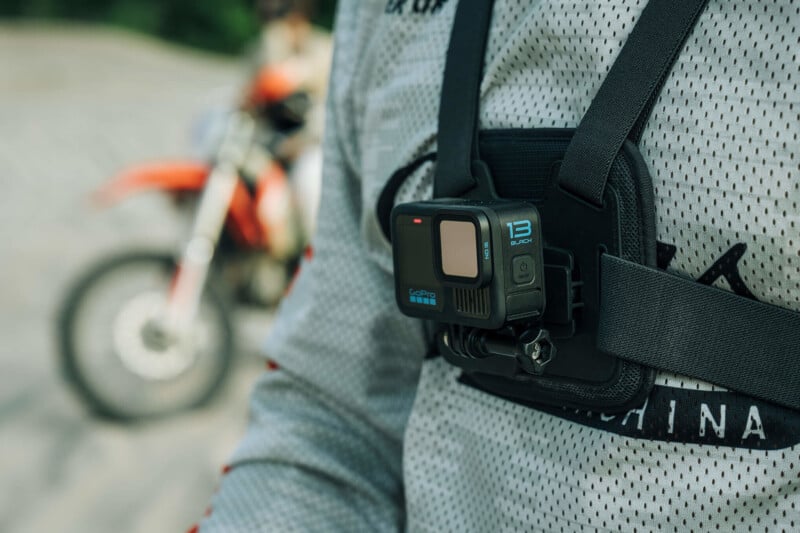In Defense of Action Cameras: Photographers Shouldn’t Overlook Their Capabilities

Think “action camera,” and visions of snowboarders recording their high-adrenaline run down a slope spring to mind, and with good reason. Action cameras have unlocked new creative options for those wanting to capture their active pursuits on film. The results can be jaw-dropping, thanks to 4K or even 5.7K resolution options, enhanced slow motion, and mind-blowing stability. In short, an action camera can capture footage that looks like it was shot by a film crew rather than a tiny camera mounted to your ski helmet.
But ask someone when the last time they took a still image using their action camera was, and they may struggle to give you an answer. This is a shame because dismissing the stills capabilities of today’s action cameras is a mistake, and given the right scenario, that humble action camera could be precisely the right tool for the job. To prove this point, take a moment to examine the two images below; one was taken with an action camera and one with a full-frame mirrorless camera. Can you guess which is which? I’ll reveal the answer at the end.

Full disclosure: I love action cameras. I own every Osmo Action iteration from DJI, along with models from GoPro and Insta360. Admittedly, their central role in my kit is to make filming automotive content a lot easier (and safer), but I have also seen their potential for capturing photos and how brands have enhanced the stills capabilities in recent years.
But first, let’s explore why these cameras are often ignored. I wonder if there is an element of snobbery in this equation. Photographers are prone to desiring the latest and greatest gear on the market, and there’s often a wish to ‘level up’ on each element — whether it be the sensor inside the camera or the max aperture of the lens. Relying on a small, video-centric camera to capture a photograph can feel counter-intuitive and against the grain, but there are several reasons why photographers should push through these preconceptions.

Firstly, today’s action cameras offer a decent resolution. For example, the latest flagship GoPro model, the Hero 13 Black, offers a max photo resolution of 27 megapixels, which is enough to deliver stills file sizes measuring 5,568 x 4,872 pixels, while DJI’s Osmo Action 5 Pro ups the ante, offering file sizes up to 7,296 x 5,472 pixels. Better still is the format options. Back in the day, many action cameras were restricted to JPEG only, but virtually every brand now offers the ability to shoot in RAW. These files contain vast data, enabling photographers to download their photos to the computer and polish every pixel. With easily recoverable highlights and shadow details ready to be revealed, users can balance exposures or add their signature editing style to the photo.
Along with RAW shooting, another massive benefit of action cameras for still photography is their focal length and the field of view they produce. While fantastic landscape imagery can be created with longer lenses, the benefits of wide-angle views are obvious, with the ability to capture a vast view and stretch the perspective of foreground interest in the frame. GoPro’s Hero13 Black offers a 35mm equivalent focal length of 12mm, which can be switched up to 39mm.
And then there’s a more obvious reason for heading out for some stills photography with an action camera: size. If 2024 taught us anything, smaller cameras are back in fashion, with compact point-and-shoot cameras enjoying a resurgence. Well, you can’t get smaller than an action camera, with the DJI Osmo Action 5 Pro tipping the scales at 146 grams (5.2 ounces) — that’s lighter than the iPhone 15 Pro and its form factor means you can easily slip it into your pocket. While we’re talking about the size of action cameras, it’s right we acknowledge the build too. By their nature, action cameras are robust, waterproof, and stand up pretty well to any possible knocks. The truth is that while weather sealing has come leaps and bounds for mirrorless cameras, you would never take an expensive full-frame body to the same places you’d be more than happy taking an action camera. So, if you’re capturing stills in bad weather or even in water, you’ll have no worries with an action camera.

Lastly, there are all the other features we’ve not covered so far, and like many mirrorless cameras, action cameras have great connectivity options, enabling you to trigger or change exposure settings remotely. Then there are extended creative features such as shooting in burst mode to ensure you don’t miss a split-second moment from fast action scenes or capturing time-lapse stills to merge in post-production. Plus, a wide range of accessories can be paired with action cameras, including ND filters to help balance exposure levels or wide-angle filters to further increase your field of view.
So, back to our photo comparison: Image A was taken with the full-frame camera, and Image B with the DJI Osmo Action 4. Did you get it right?
While I’m not suggesting that action cameras will ever surpass or replace more regular DSLR or mirrorless cameras for capturing stills, given their unique benefits, maybe you’ll reconsider their contribution to stills and start seeing action cameras as more than video tools.